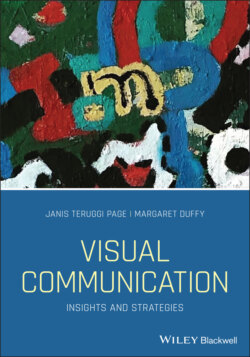Читать книгу Visual Communication - Janis Teruggi Page - Страница 36
Chapter 2 Visualizing Ethics: Revealing Shortcuts and Missteps
ОглавлениеFriend or Foe? Hero or Villain?
When you meet a stranger at a bar, you automatically draw conclusions about the person's age, gender, and their differences or similarities to yourself. You process a huge amount of information almost instantaneously and use shortcuts to assign that person to certain categories. Are they a student, professor, office worker, soldier, athlete, other? Of course, you may be mistaken in this process, thinking that an old‐looking individual is a teacher when he's actually a student, or the heavily tattooed woman who looks like a Goth may actually be a social worker or a business executive (tattoos are no longer taboo in many corporate offices).
We also use physical and visual cues to identify that a truck is a type of motorized transportation, that an apple falls into the category of fruit, and that a starling is a species of bird. This quick categorization is an evolutionary adaptation and helps us conserve cognitive resources. By that we mean that every time you encounter a phenomenon, you don't need to think a lot about what it is and what it means to you. Trying to understand others' intentions toward oneself is a crucial survival skill, and visual cues are the primary means we use to make evaluations.
Sometimes, however, we are influenced by unconscious bias and make faulty snap judgments, raising ethical concerns. Inferences we make about people may lead us to make bad choices when evaluating them. The ethical questions raised with this impulse to judge begins our study of routines and practices in our daily and professional lives that concern visual ethics.
Key Learning Objectives
After engaging in this chapter, you'll be able to:
1 Understand the ethical dimensions of visual communication.
2 Identify the ethical dimensions of visual manipulation, framing, appropriation, and intellectual property.
3 Apply strategies for evaluating the ethics of visual communication that you or others create.
Chapter Overview
In this chapter, we'll outline useful approaches to ethical decision‐making in creating and consuming visuals. You’ll see real‐world examples including the ethics of using graphic photos and videos, issues related to memes and remixes as well as photo manipulation, and stereotyping. We'll discuss visual framing, the concept that any image or video is created and presented in ways that highlight some aspects of a phenomenon or event while downplaying or eliminating other aspects. These frames thus present readers and viewers with different meanings. A related issue is that of visual metaphors where viewers are invited to see one thing in terms of another. For example, a Nike ad showing a tennis star serving a grenade instead of a tennis ball highlights not only the star's explosive serve, but the Nike brand gear that presumably enables it. Finally, we work through a concrete example of applying an ethical framework to a health communication issue and introduce you to the Potter Box, a well‐known and frequently used approach to media ethics questions.
